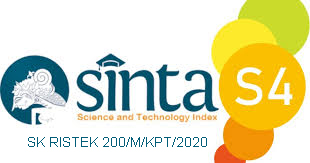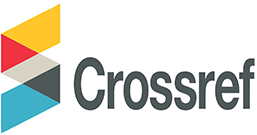Evaluating the Performance of ETSI-ITS Multi-Stack Protocols for V2V Communication in VANETs: A Simulation Study
Abstract
The research evaluates various multi-stack protocols for Vehicular Ad-hoc Networks (VANETs), focusing on Vehicle-to-Vehicle (V2V) communication scenarios with Emergency Vehicle (EV) simulations. The study uses the ns-3 network and SUMO (Simulation of Urban MObility) traffic simulators to test these protocols in diverse scenarios, including fluctuating data rates and dense network conditions. By implementing the IEEE 802.11p protocol alongside vehicular message dissemination stacks compliant with ETSI (European Telecommunications Standards Institute) ITS (Intelligent Transport Systems) standards, the study performs simulation experiments with varying vehicle counts, ranging from 20 to 35. It employs two distinct data rate configurations while maintaining a constant transmission power of 23 dBm. The results indicate a decline in the average Packet Reception Ratio (PRR) as vehicle density increases, indicating heightened contention and interference. At the same time, there is an observed increase in average latency, contributing to increased message transmission and reception delays. The quantitative analysis demonstrates an inverse relationship between the average PRR and the total vehicle count when the SEND_CAM message is enabled. On the other hand, disabling SEND_CAM maintains a relatively consistent average PRR across scenarios. Additionally, a positive correlation between vehicle count and average latency underlines the impact of network congestion and interference on communication efficacy within VANETs. Despite suboptimal PRR values falling between 41% and 47%, latency performance remains satisfactory, with average latency durations ranging from 0.154 s to 0.187 s. Notably, the SEND_CAM parameter status shows negligible impact on protocol performance, suggesting that network density plays a more pivotal role. Finally, this study offers valuable insights into the trade-offs and challenges of multi-stack protocols in V2V communication within VANETs. Further optimization efforts are recommended to improve packet reception ratios, especially in high-vehicle-density environments, while maintaining acceptable latency levels. These findings contribute to the ongoing efforts to enhance the reliability and efficiency of communication protocols in VANETs, thus advancing the development of intelligent transportation systems. The study's quantitative protocol performance analysis under varying network conditions provides valuable guidance for optimizing V2V communication deployments in VANETs.
Keywords
Full Text:
PDFReferences
K. Ashok et al., “Review on Energy Efficient V2V Communication Techniques for a Dynamic and Congested Traffic Environment,” 2022 Int. Conf. Comput. Commun. Informatics, ICCCI 2022, pp. 0–5, 2022, doi: 10.1109/ICCCI54379.2022.9740853. DOI:10.1109/ICCCI54379.2022.9740853
S. Hakak et al., “Autonomous Vehicles in 5G and Beyond: A Survey,” Veh. Commun., vol. 39, p. 100551, 2022, doi: 10.1016/j.vehcom.2022.100551. DOI:10.1016/j.vehcom.2022.100551 http://arxiv.org/abs/2207.10510
T. K. Priyambodo, D. Wijayanto, and M. S. Gitakarma, “Performance optimization of MANET networks through routing protocol analysis,” Computers, vol. 10, no. 1, pp. 1–13, 2021, doi: 10.3390/computers10010002. DOI:10.3390/computers10010002
P. K. Singh, S. K. Nandi, and S. Nandi, “A tutorial survey on vehicular communication state of the art, and future research directions,” Veh. Commun., vol. 18, p. 100164, 2019, doi: 10.1016/j.vehcom.2019.100164. DOI:10.1016/j.vehcom.2019.100164 https://doi.org/10.1016/j.vehcom.2019.100164
M. Malinverno, F. Raviglione, C. Casetti, C. F. Chiasserini, J. Mangues-Bafalluy, and M. Requena-Esteso, “A Multi-stack Simulation Framework for Vehicular Applications Testing,” DIVANet 2020 - Proc. 10th ACM Symp. Des. Anal. Intell. Veh. Networks Appl., pp. 17–24, 2020, doi: 10.1145/3416014.3424603. DOI:10.1145/3416014.3424603
F. Belamri, S. Boulfekhar, and D. Aissani, “A survey on QoS routing protocols in Vehicular Ad Hoc Network (VANET),” Telecommun. Syst., vol. 78, no. 1, pp. 117–153, 2021, doi: 10.1007/s11235-021-00797-8. DOI:10.1007/s11235-021-00797-8 https://doi.org/10.1007/s11235-021-00797-8
C. R. Guerber, E. L. Gomes, M. S. Pereira Fonseca, A. Munaretto, and T. H. Silva, “Transmission Opportunities: A New Approach to Improve Quality in V2V Networks,” Wirel. Commun. Mob. Comput., vol. 2019, 2019, doi: 10.1155/2019/1708437. DOI:10.1155/2019/1708437
W. Albattah, S. Habib, M. F. Alsharekh, M. Islam, S. Albahli, and D. A. Dewi, “An Overview of the Current Challenges, Trends, and Protocols in the Field of Vehicular Communication,” Electron., vol. 11, no. 21, 2022, doi: 10.3390/electronics11213581. DOI:10.3390/electronics11213581
U. A. Khan and S. S. Lee, “Multi-layer problems and solutions in VANETs: A review,” Electron., vol. 8, no. 2, 2019, doi: 10.3390/electronics8020204. DOI:10.3390/electronics8020204
M. N. Tahir and M. Katz, “Performance evaluation of IEEE 802.11p, LTE and 5G in connected vehicles for cooperative awareness,” Eng. Reports, vol. 4, no. 4, pp. 1–14, 2022, doi: 10.1002/eng2.12467. DOI:10.1002/eng2.12467
P. Sousa, M. Alam, J. Ferreira, and J. ao P. Barraca, “Non-IP Multi-protocol Stack for Vehicular Communications,” Mob. Networks Appl., vol. 23, no. 5, pp. 1179–1193, 2018, doi: 10.1007/s11036-016-0781-x. DOI:10.1007/s11036-016-0781-x
T. K. Bhatia, R. K. Ramachandran, R. Doss, and L. Pan, “A Comprehensive Review on the Vehicular Ad-hoc Networks,” ICRITO 2020 - IEEE 8th Int. Conf. Reliab. Infocom Technol. Optim. (Trends Futur. Dir., pp. 515–520, 2020, doi: 10.1109/ICRITO48877.2020.9197778. DOI:10.1109/ICRITO48877.2020.9197778
K. G. Lim, C. H. Lee, R. K. Y. Chin, K. Beng Yeo, and K. T. K. Teo, “SUMO enhancement for vehicular ad hoc network (VANET) simulation,” Proc. - 2017 IEEE 2nd Int. Conf. Autom. Control Intell. Syst. I2CACIS 2017, vol. 2017-Decem, no. October, pp. 86–91, 2017, doi: 10.1109/I2CACIS.2017.8239038. DOI:10.1109/I2CACIS.2017.8239038
W. Liu, X. Wang, W. Zhang, L. Yang, and C. Peng, Coordinative simulation with SUMO and NS3 for Vehicular Ad Hoc Networks. IEEE, 2016. doi: 10.1109/APCC.2016.7581471. DOI:10.1109/APCC.2016.7581471
M. R. Hasan, Y. Zhao, Y. Luo, G. Wang, and R. M. Winter, “An Effective AODV-based Flooding Detection and Prevention for Smart Meter Network,” Procedia Comput. Sci., vol. 129, pp. 454–460, 2018, doi: 10.1016/j.procs.2018.03.024. DOI:10.1016/j.procs.2018.03.024 https://doi.org/10.1016/j.procs.2018.03.024
S. Laux et al., “Demo: OpenC2X - An open source experimental and prototyping platform supporting ETSI ITS-G5,” IEEE Veh. Netw. Conf. VNC, vol. 0, pp. 10–11, 2016, doi: 10.1109/VNC.2016.7835955. DOI:10.1109/VNC.2016.7835955
D. Grewe, A. Tan, M. Wagner, S. Schildt, and H. Frey, “A Real World Information-Centric Connected Vehicle Testbed Supporting ETSI ITS-G5,” 2018 Eur. Conf. Networks Commun. EuCNC 2018, pp. 219–223, 2018, doi: 10.1109/EuCNC.2018.8442818. DOI:10.1109/EuCNC.2018.8442818
I. A. Rahardjo, R. Anggoro, and F. X. Arunanto, “Studi Kinerja 802.11P pada Protokol Ad Hoc On-Demand Distance Vector (AODV) di Lingkungan Vehicular Ad Hoc Network (VANET) Menggunakan Network Simulator 2 (NS-2),” J. Tek. ITS, vol. 6, no. 1, pp. 1–6, 2017, doi: 10.12962/j23373539.v6i1.21994. DOI:10.12962/j23373539.v6i1.21994
J. Joo, O. S. Eyobu, J. H. Kim, H.-J. Jeong, and D. S. Han, “Analysis of Radio Propagation Characteristics for V2V Scenarios in WAVE Standard Based Vehicular Communication System,” The Journal of Korean Institute of Communications and Information Sciences, vol. 42, no. 6. Korea Information and Communications Society, pp. 1175–1184, 2017. doi: 10.7840/kics.2017.42.6.1175. DOI:10.7840/kics.2017.42.6.1175 http://dx.doi.org/10.7840/kics.2017.42.6.1175
Y. H. Kim, S. Peeta, and X. He, “Modeling the information flow propagation wave under vehicle-to-vehicle communications,” Transp. Res. Part C Emerg. Technol., vol. 85, no. October, pp. 377–395, 2017, doi: 10.1016/j.trc.2017.09.023. DOI:10.1016/j.trc.2017.09.023 http://dx.doi.org/10.1016/j.trc.2017.09.023
ETSI EN 302 890-1, “Intelligent Transport Systems (ITS); Facilities layer function; Part 1: Services Announcement (SA) specification,” Etsi, vol. 1, pp. 1–19, 2019.
S. Eckelmann, T. Trautmann, H. Ußler, B. Reichelt, and O. Michler, “V2V-Communication, LiDAR System and Positioning Sensors for Future Fusion Algorithms in Connected Vehicles,” Transp. Res. Procedia, vol. 27, pp. 69–76, 2017, doi: 10.1016/j.trpro.2017.12.032. DOI:10.1016/j.trpro.2017.12.032 https://doi.org/10.1016/j.trpro.2017.12.032
D. Eckhoff, N. Sofra, and R. German, “A Performance Study of Cooperative Awareness in ETSI ITS G5 and IEEE WAVE”.
B. Fernandes, M. Alam, and J. Ferreira, “Implementation and Analysis of IEEE and ETSI Security Standards,” 2018.
DOI: https://doi.org/10.31326/jisa.v7i1.2010
Refbacks
- There are currently no refbacks.
Copyright (c) 2024 Ketut Bayu Yogha Bintoro , David Geraldo

This work is licensed under a Creative Commons Attribution-ShareAlike 4.0 International License.
JOURNAL IDENTITY
Journal Name: JISA (Jurnal Informatika dan Sains)
e-ISSN: 2614-8404, p-ISSN: 2776-3234
Publisher: Program Studi Teknik Informatika Universitas Trilogi
Publication Schedule: June and December
Language: English
APC: The Journal Charges Fees for Publishing
Indexing: EBSCO , DOAJ, Google Scholar, Arsip Relawan Jurnal Indonesia, Directory of Research Journals Indexing, Index Copernicus International, PKP Index, Science and Technology Index (SINTA, S4) , Garuda Index
OAI address: http://trilogi.ac.id/journal/ks/index.php/JISA/oai
Contact: jisa@trilogi.ac.id
Sponsored by: DOI – Digital Object Identifier Crossref, Universitas Trilogi
In Collaboration With: Indonesian Artificial Intelligent Ecosystem(IAIE), Relawan Jurnal Indonesia, Jurnal Teknologi dan Sistem Komputer (JTSiskom)
JISA (Jurnal Informatika dan Sains) is Published by Program Studi Teknik Informatika, Universitas Trilogi under Creative Commons Attribution-ShareAlike 4.0 International License.


















